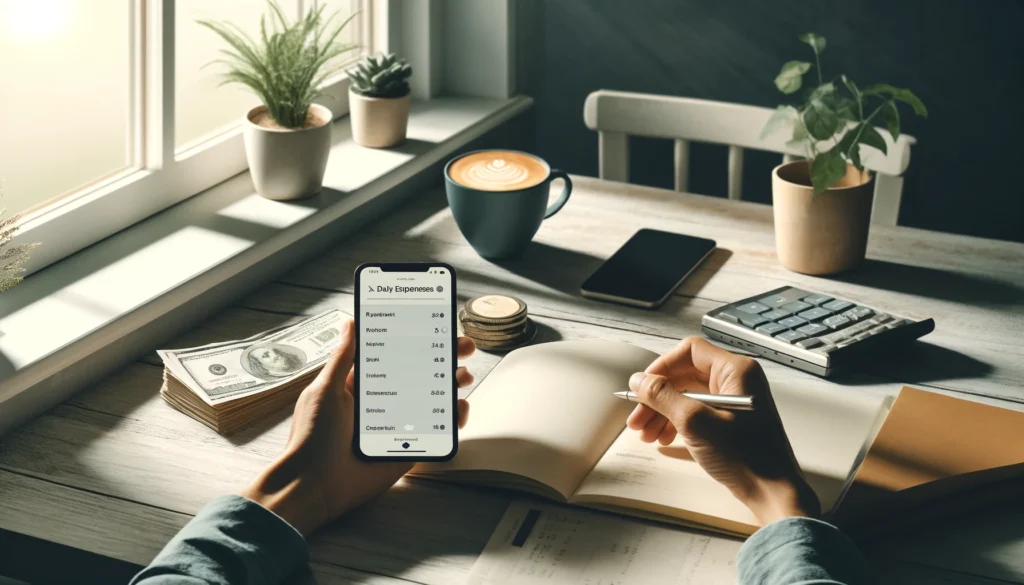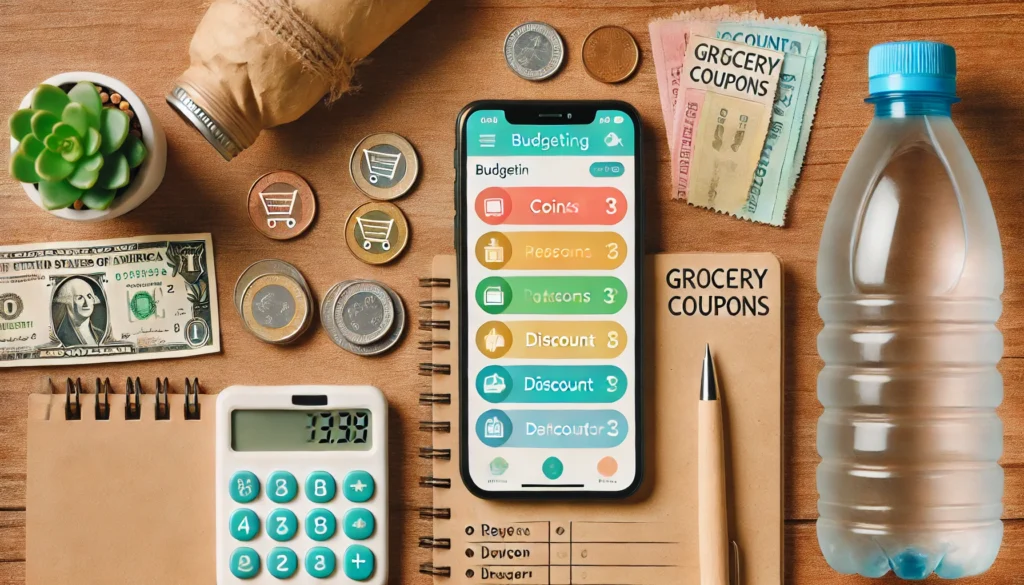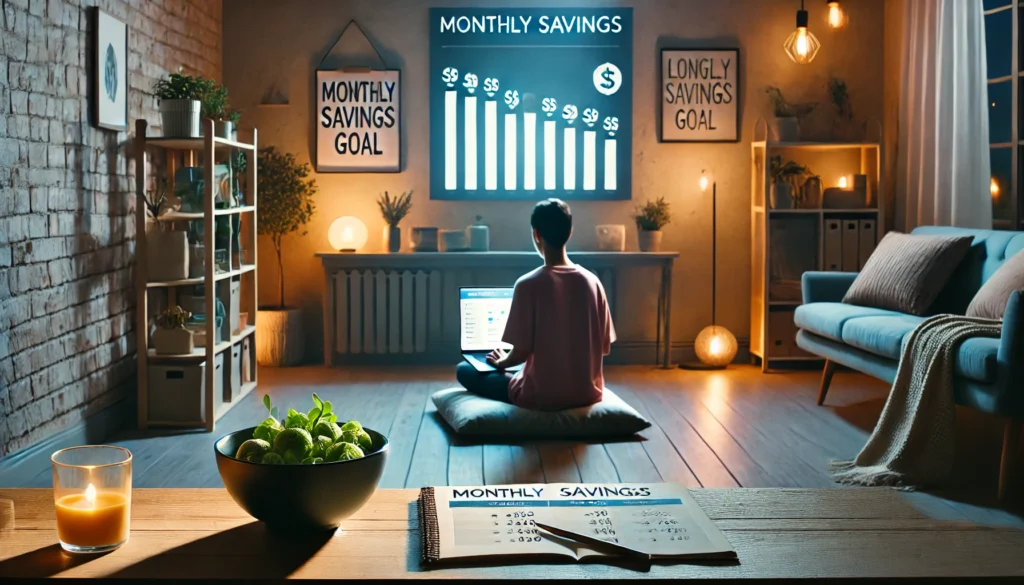Frugal living is often misunderstood as mere penny-pinching or an austere lifestyle devoid of enjoyment. However, at its core, frugal living is about intentionality—making conscious financial choices that align with one’s values and long-term goals. For those striving to embrace this strategy, the advent of digital tools has significantly expanded the possibilities. Among these, a daily expenses app has emerged as a game-changer. More than just a ledger or a virtual notepad, such an application for daily expenses offers real-time insights, automated categorization, behavioral analytics, and customizable goal tracking. When integrated thoughtfully into a frugal living approach, a daily expenses app can transform not only how you manage your finances but how you relate to money itself.
You may also like: 10 Genius Frugal Living Hacks: Effective Ways to Save Money on Household Bills
The Psychology Behind Frugal Living and Digital Tools
To appreciate how a daily expenses app can revolutionize frugal living, one must first understand the psychological framework that supports such a lifestyle. Frugality is deeply tied to delayed gratification, self-awareness, and behavioral change. People who succeed in maintaining a frugal lifestyle often exhibit higher levels of emotional intelligence, particularly in their ability to assess needs versus wants. A well-designed daily expenses app amplifies this self-awareness. It allows users to see, often in stark graphical detail, the ripple effects of their spending decisions. What was once abstract—the cumulative impact of a daily coffee or impulse online shopping—becomes tangible and thus more controllable.
Digital tools also appeal to the brain’s reward systems. When users set savings goals within an application for daily expenses and achieve milestones, the positive reinforcement of visual progress bars, notifications, and gamified achievements can trigger dopamine responses. This is not trivial. The intrinsic satisfaction from seeing a “goal completed” banner can replace the fleeting pleasure of a spontaneous purchase. Over time, the user rewires their reward-seeking behavior from consumption to conservation, supported by daily, data-driven nudges.

Real-Time Awareness: Why Timing Matters in Financial Decision-Making
Timing is critical in financial decisions. The immediacy with which we understand the consequences of our actions often determines whether we stay on track or deviate from our plans. A daily expenses app excels precisely because it removes the lag between spending and reflection. Traditional budgeting methods, such as monthly spreadsheets or paper journals, provide information in retrospect. By contrast, an application for daily expenses delivers real-time data, allowing users to course-correct instantly.
Imagine being at a grocery store, tempted by a promotional sale. With a daily expenses app, you can immediately check how much of your grocery budget remains for the month. That quick glance could mean the difference between a smart purchase and an unnecessary splurge. The temporal proximity of information to action is invaluable. It empowers users to make choices grounded in reality rather than emotion or guesswork. In this way, the app doesn’t just record decisions—it actively influences them.
Behavioral Analytics and Spending Patterns
Another advanced feature of many modern daily expenses apps is their use of behavioral analytics. These applications don’t just categorize expenses; they analyze trends, detect anomalies, and generate predictive insights. For someone committed to frugal living, this is a treasure trove of actionable intelligence. Over time, the app can identify which spending categories are most volatile, which months incur higher-than-usual expenses, and which days of the week you’re more likely to indulge in non-essential purchases.
Such granular insights allow users to fine-tune their habits with surgical precision. For instance, if the data reveals that dining out spikes every Friday, you might choose to pre-cook meals for that day or schedule a low-cost social activity instead. In this way, the app functions almost like a behavioral coach, constantly learning and adapting to your financial tendencies. The more you use it, the smarter it becomes—and the more it empowers your frugal lifestyle.
Customizable Goal Setting: Turning Abstract Aspirations into Tangible Targets
Goal setting is a cornerstone of any successful financial plan, but vague aspirations often lead to mediocre outcomes. A daily expenses app transforms nebulous ideas like “save more” or “spend less” into concrete, trackable objectives. Users can set specific savings targets, assign deadlines, and even link goals to particular spending categories. This customization creates a direct line between everyday actions and long-term dreams.
For example, if your goal is to build a $5,000 emergency fund within a year, the app can break this down into monthly, weekly, or even daily savings milestones. Each transaction you make is then contextualized within this framework. A $20 dinner out isn’t just an isolated expense; it’s a potential setback to your emergency fund. Conversely, choosing a home-cooked meal becomes a small victory. This ongoing feedback loop reinforces discipline and keeps your aspirations top of mind.
Eliminating Financial Blind Spots Through Categorization
Most people have at least one “blind spot” in their spending habits—an area where money seems to vanish without clear explanation. Whether it’s online subscriptions, impulse buys, or small but frequent ATM withdrawals, these invisible leaks can sabotage a frugal living plan. A robust application for daily expenses brings these patterns to light through detailed categorization.
When every transaction is automatically sorted into meaningful categories, it becomes easier to identify these black holes. Perhaps you never realized how much you’re spending on rideshares because each charge felt small in isolation. But when grouped together over a month, the total might rival your utility bill. This visibility is crucial. It allows users to patch leaks they didn’t even know existed, often recovering hundreds or even thousands of dollars annually. The impact on your frugal living strategy is immediate and profound.
Enhancing Accountability Through Sharing and Syncing Features
Frugal living often involves more than one person—whether it’s a partner, a family, or even a community of like-minded savers. A daily expenses app can strengthen collective accountability through features like shared budgets, syncing across devices, and collaborative goal-setting. When everyone involved in a household or group can see and contribute to the same financial dashboard, transparency increases and miscommunication decreases.
These collaborative features are not merely technical conveniences; they serve a deeper psychological function. Knowing that your partner can see your discretionary spending can act as a powerful deterrent against impulse purchases. It transforms budgeting from a solitary endeavor into a shared mission. And in doing so, it bolsters emotional and financial trust—both essential ingredients for sustained frugality.
Adaptive Budgets for a Dynamic Lifestyle
One of the common criticisms of traditional budgeting is its rigidity. Life, after all, is unpredictable. An unexpected medical bill, a surprise travel opportunity, or even a seasonal shift in utility usage can render static budgets obsolete. A sophisticated daily expenses app addresses this limitation through adaptive budgeting features. These allow users to reallocate funds between categories on the fly while preserving the overall financial framework.
This flexibility ensures that a frugal lifestyle doesn’t become a fragile one. You can absorb shocks without abandoning your principles. If you overspend in one area, the app helps you rebalance by trimming in another. Over time, this dynamic responsiveness becomes second nature, making your frugal strategy both resilient and sustainable.
Data-Driven Motivation and Progress Tracking
Progress is a powerful motivator, especially when it can be visualized and quantified. A well-designed application for daily expenses offers various metrics and visual dashboards that showcase your financial journey. These aren’t just vanity stats; they serve a critical emotional function. Seeing your debt shrink or your savings grow creates a sense of momentum that propels you forward.
Moreover, these visualizations can help break large goals into psychologically manageable chunks. Watching your net worth graph inch upward or your spending graph narrow in key categories provides immediate, tangible evidence that your efforts are working. This can be particularly helpful during periods of financial strain, when motivation might wane. The data becomes your cheerleader, offering objective proof that progress is being made.
Integrating Minimalism with Financial Technology
Minimalism and frugal living often go hand in hand, united by a shared emphasis on intentional choices and the rejection of excess. A daily expenses app complements this philosophy perfectly by helping users declutter their financial lives. Just as minimalists strive to own fewer but more meaningful possessions, frugal individuals can use these apps to focus their financial energy on what truly matters.
Through streamlined interfaces and simplified reporting, an application for daily expenses reduces cognitive overload. Instead of juggling multiple spreadsheets, bank statements, and receipts, users have a centralized, intuitive dashboard. This clarity allows for deeper reflection and more deliberate action. Over time, financial minimalism—a natural outgrowth of both frugality and technological aid—can lead to a richer, more fulfilling life.

Frequently Asked Questions (FAQ): Maximizing the Power of Daily Expenses Apps
1. How can a daily expenses app support long-term financial behavior change?
A well-designed daily expenses app goes beyond simple tracking; it can actively influence your spending psychology. By visualizing where your money goes daily, the app creates a sense of accountability that mirrors the benefits of working with a personal finance coach. Over time, seeing consistent progress—even in small savings—reinforces positive habits and reduces impulse spending. The cumulative data gathered can help users spot seasonal or emotional spending triggers they weren’t previously aware of. In this way, the app doesn’t just manage your daily expense log—it rewires how you think about money.
2. What are some overlooked features in advanced applications for daily expenses?
Many users underutilize features like geotagged spending, real-time syncing across devices, or AI-generated budget recommendations. Some applications for daily expenses integrate with other platforms like investment trackers or crypto wallets, offering a more holistic view of personal finance. Others include collaborative features that allow couples or roommates to manage shared expenses with clarity. There are even apps that offer gamification elements, rewarding users with badges or streaks for consistent logging. Exploring these deeper functions can transform a basic tool into a powerhouse for frugal living.
3. How do daily expenses apps cater to different income brackets or financial goals?
The best daily expenses app platforms offer customization for various income levels, allowing users to set budget categories that reflect their lifestyle. For someone earning a modest income, the emphasis might be on essentials and debt repayment, while higher earners might focus on optimizing discretionary spending or boosting savings. Additionally, some apps offer personalized financial literacy resources based on user data. A freelancer might benefit from features that separate business from personal daily expense logs, whereas a retiree may prioritize medical or leisure categories. This adaptability ensures relevance across demographics.
4. Can using an application for daily expenses reveal hidden lifestyle costs?
Absolutely. Over time, an application for daily expenses can uncover subtle but significant patterns—like convenience purchases, recurring app subscriptions, or overpriced grocery brands. These costs often fly under the radar because they feel insignificant individually. But aggregating such data over months exposes their true financial impact. For instance, you might discover you’re spending $1,200 annually on takeout lunches you assumed were occasional. The awareness gained empowers smarter choices without drastic sacrifices to lifestyle quality.
5. Are there privacy concerns associated with using a daily expenses app?
Yes, and they deserve thoughtful attention. A daily expenses app typically requests sensitive data—like bank access, transaction histories, or personal identifiers. While most reputable apps use encryption and two-factor authentication, users should still review privacy policies and opt-out settings. It’s wise to choose apps that allow manual input if you’re uneasy about automatic syncing. Some privacy-focused applications for daily expenses even store data locally instead of cloud-based servers. Prioritizing security doesn’t mean sacrificing usability—it means choosing tools aligned with your comfort level.
6. How can couples or families benefit from shared daily expense tracking?
Joint budgeting can be a source of tension, but a shared daily expenses app turns finances into a collaborative project. These apps make it easy to divide household costs, track who paid what, and set savings goals together. This shared visibility reduces misunderstandings and fosters a sense of partnership. Parents can even use the app to teach older kids about financial responsibility by assigning them budget categories. A shared application for daily expenses promotes transparency while reinforcing mutual goals—critical for households aiming to live more frugally without resentment.
7. What emerging technologies are shaping the future of daily expenses apps?
Artificial intelligence and machine learning are revolutionizing how a daily expenses app interprets user behavior. New apps can predict future spending patterns, alert you to budget breaches in real time, or even automate savings transfers based on surplus funds. Some tools are experimenting with natural language interfaces—letting users verbally log a daily expense via smart speakers or mobile assistants. In the near future, integration with digital IDs or blockchain could enhance both personalization and security. These innovations point toward an increasingly intelligent and seamless financial management experience.
8. How do cultural differences affect the use of applications for daily expenses?
Spending behaviors are deeply influenced by cultural norms. For example, in some societies, cash is still king—so an application for daily expenses must accommodate manual entry and flexible categories for cash-based transactions. In contrast, digital-first cultures benefit from apps that integrate seamlessly with mobile payments and e-wallets. Additionally, perceptions around saving, debt, or even what constitutes a necessary daily expense vary by region. App developers are starting to localize interfaces, recommendations, and even terminology to align with users’ cultural financial values.
9. What psychological effects does consistent expense tracking have on users?
Consistently logging every daily expense can instill a heightened sense of mindfulness. It trains your brain to associate each spending decision with accountability, reducing the dopamine rush of impulsive buys. Over time, this process strengthens financial self-regulation, making frugality feel like empowerment rather than deprivation. Some users report improved emotional well-being, as the uncertainty and anxiety around money begin to fade. While using an application for daily expenses isn’t therapy, the self-awareness it builds contributes to stronger financial mental health.
10. Can a daily expenses app be customized for non-traditional lifestyles, such as digital nomads or gig workers?
Yes, and this is where the flexibility of a well-designed daily expenses app shines. Gig workers and digital nomads often have irregular income streams and travel-related expenses that don’t fit traditional budgeting molds. A customizable application for daily expenses can track earnings by project or location, set currency conversions, and adapt to erratic schedules. These tools help users smooth out financial volatility, preparing for lean periods without stress. For people with unconventional work-lives, this level of insight makes budgeting not just feasible—but freeing

Conclusion: Transforming Frugality into a Lifestyle of Empowerment
Frugal living is more than a tactic for surviving lean times; it is a philosophy for thriving with less. In an age dominated by consumer culture and instant gratification, choosing to live intentionally is a radical act. A daily expenses app makes this choice not only viable but deeply rewarding. By delivering real-time insights, enhancing behavioral awareness, enabling adaptive budgeting, and fostering collaborative accountability, an application for daily expenses becomes far more than a convenience—it becomes a catalyst for transformation.
What was once a labor-intensive process of manual tracking and delayed feedback is now an elegant, integrated experience that supports mindful living at every turn. As you incorporate such a tool into your frugal strategy, you begin to see money not as a source of stress but as a resource to be mastered. The journey toward financial independence and intentional living becomes clearer, more attainable, and infinitely more satisfying. In the final analysis, a daily expenses app does not just help you save money—it helps you reclaim control over your life.
budget management strategies, digital finance tools, mindful money habits, expense tracking benefits, mobile budgeting solutions, personal finance tracking, smart saving habits, minimalism and money, tech-enhanced budgeting, finance app advantages, conscious consumerism, money mindfulness practices, expense control techniques, financial goal tracking, intentional living tools, frugal lifestyle planning, digital budgeting systems, financial awareness tools, mobile money management, financial empowerment apps
Further Reading:
Mastering Smart Daily Expense Management: A Guide to Financial Wellness
9 Smart Ways to Slash Expenses and Embrace Frugal Living
How to Be Frugal: Tips for Saving Money
Legal Disclaimer
The information provided in this article is for general informational purposes only and is not intended to constitute financial, investment, legal, tax, or other professional advice. The content should not be relied upon for making any financial or investment decisions. Readers are encouraged to consult with licensed professionals, such as financial advisors, attorneys, or tax experts, to obtain personalized advice tailored to their individual circumstances. The author and publisher disclaim any liability for any actions taken or not taken based on the information provided in this article.





